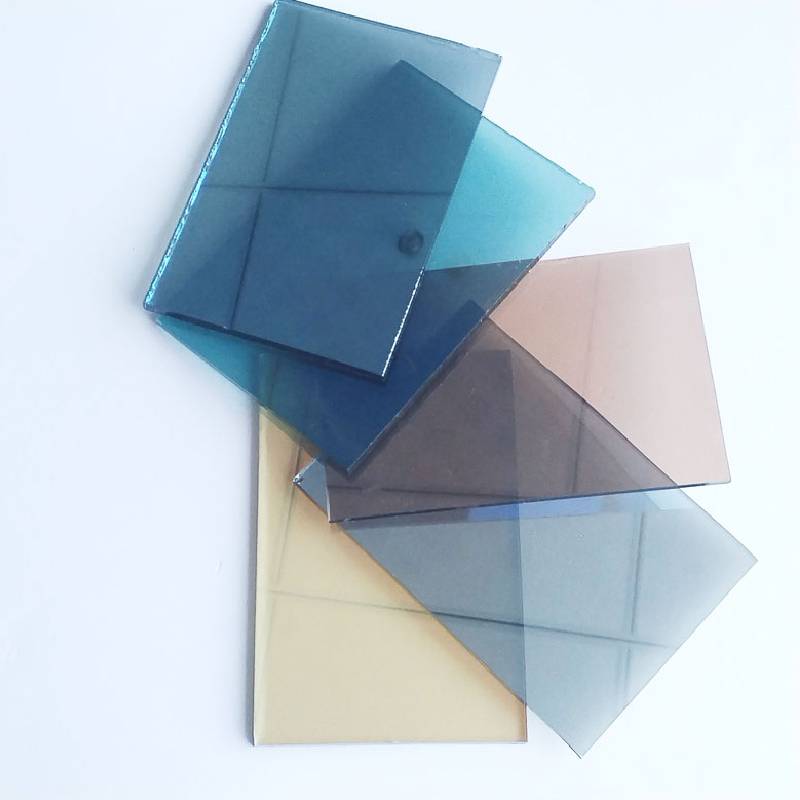Tempered glass, known for its strength and safety, has become an essential material in various industries. This article delves into the multi-faceted functions of tempered glass, exploring its unique properties and applications, while providing a comprehensive overview of its benefits and versatility, backed by expert opinions and real-world experiences.

Tempered glass is manufactured through a process of extreme heating and rapid cooling, which toughens the glass and increases its impact resistance compared to regular glass. One of the most critical functions of tempered glass is its safety feature. Unlike ordinary glass, tempered glass breaks into small, blunt pieces, reducing the potential for injury. This characteristic makes it an ideal choice for applications where human safety is paramount, such as in automobile windows, shower doors, and storefronts.
The durability of tempered glass extends its functionality further into areas that require resilience against environmental elements. In architectural design, tempered glass is frequently used for building facades and large windows due to its ability to withstand high wind pressures and temperature variations. This robust quality ensures that structures maintain their integrity, providing reliability and reducing maintenance costs over time.

Additionally, tempered glass is renowned for its thermal stability. Its ability to endure high temperatures without distortion makes it perfect for use in kitchen appliances, such as oven doors and stovetops. Professional chefs and culinary experts often prefer tempered glass due to its safety and efficiency, ensuring that their cooking processes remain uninterrupted by the risk of glass breakage.
From the realm of consumer electronics, tempered glass serves a pivotal role in protecting delicate components. Screen protectors made from tempered glass have gained popularity among smartphone users for their scratch resistance and ability to absorb impacts. This function significantly enhances the longevity of electronic devices, offering a cost-effective solution to screen damage.
The aesthetic appeal of tempered glass cannot be overlooked. Designers and architects frequently employ it when transparency and elegance are desired. For instance, in interior design, tempered glass is used for creating sleek, modern staircases and decorative room dividers that allow for an open atmosphere, maximizing space and light flow within residential and commercial environments.
tempered glass function
Environmental sustainability further enhances the authoritative stance of tempered glass in the market. It is a recyclable material, which supports eco-friendly building certifications and contributes to reducing the carbon footprint of construction projects. Developers and builders are increasingly leaning towards environmentally sustainable materials, and tempered glass fits this paradigm by offering durability coupled with recyclability.
Experts in the field of glass manufacturing emphasize the precision and technological advancements involved in producing tempered glass. Modern techniques ensure that each piece of tempered glass meets industry standards, guaranteeing unparalleled performance and safety. These procedural enhancements reflect a growing trust in tempered glass solutions, fostering a sense of assurance among users and industry leaders alike.
In practice, the use of tempered glass also translates into economic advantages. For businesses, the longevity and minimal maintenance required by tempered glass installations result in substantial cost savings. Furthermore, its versatile applications across various sectors, from automotive to architectural to consumer electronics, underscore its value proposition to stockholders and stakeholders looking for long-lasting materials.
Real-world applications further underscore its reliability. For example, the use of tempered glass in exposed coastal buildings mitigates the risk posed by debris during severe storms. An architect’s choice to employ tempered glass demonstrates a commitment to both safety and aesthetic precision, highlighting the material’s impressive balance between form and function.
In conclusion, tempered glass emerges as a superior material that combines safety, durability, thermal resistance, aesthetic value, and environmental benefits. Its multifunctional nature not only reflects its expertise across diverse industries but also builds an authoritative trustworthiness that is hard to rival. By choosing tempered glass, industries embrace a blend of innovation and reliability, ensuring longevity and safety in their applications.
 Afrikaans
Afrikaans  Albanian
Albanian  Amharic
Amharic  Arabic
Arabic  Armenian
Armenian  Azerbaijani
Azerbaijani  Basque
Basque  Belarusian
Belarusian  Bengali
Bengali  Bosnian
Bosnian  Bulgarian
Bulgarian  Catalan
Catalan  Cebuano
Cebuano  Corsican
Corsican  Croatian
Croatian  Czech
Czech  Danish
Danish  Dutch
Dutch  English
English  Esperanto
Esperanto  Estonian
Estonian  Finnish
Finnish  French
French  Frisian
Frisian  Galician
Galician  Georgian
Georgian  German
German  Greek
Greek  Gujarati
Gujarati  Haitian Creole
Haitian Creole  hausa
hausa  hawaiian
hawaiian  Hebrew
Hebrew  Hindi
Hindi  Miao
Miao  Hungarian
Hungarian  Icelandic
Icelandic  igbo
igbo  Indonesian
Indonesian  irish
irish  Italian
Italian  Japanese
Japanese  Javanese
Javanese  Kannada
Kannada  kazakh
kazakh  Khmer
Khmer  Rwandese
Rwandese  Korean
Korean  Kurdish
Kurdish  Kyrgyz
Kyrgyz  Lao
Lao  Latin
Latin  Latvian
Latvian  Lithuanian
Lithuanian  Luxembourgish
Luxembourgish  Macedonian
Macedonian  Malgashi
Malgashi  Malay
Malay  Malayalam
Malayalam  Maltese
Maltese  Maori
Maori  Marathi
Marathi  Mongolian
Mongolian  Myanmar
Myanmar  Nepali
Nepali  Norwegian
Norwegian  Norwegian
Norwegian  Occitan
Occitan  Pashto
Pashto  Persian
Persian  Polish
Polish  Portuguese
Portuguese  Punjabi
Punjabi  Romanian
Romanian  Russian
Russian  Samoan
Samoan  Scottish Gaelic
Scottish Gaelic  Serbian
Serbian  Sesotho
Sesotho  Shona
Shona  Sindhi
Sindhi  Sinhala
Sinhala  Slovak
Slovak  Slovenian
Slovenian  Somali
Somali  Spanish
Spanish  Sundanese
Sundanese  Swahili
Swahili  Swedish
Swedish  Tagalog
Tagalog  Tajik
Tajik  Tamil
Tamil  Tatar
Tatar  Telugu
Telugu  Thai
Thai  Turkish
Turkish  Turkmen
Turkmen  Ukrainian
Ukrainian  Urdu
Urdu  Uighur
Uighur  Uzbek
Uzbek  Vietnamese
Vietnamese  Welsh
Welsh  Bantu
Bantu  Yiddish
Yiddish  Yoruba
Yoruba  Zulu
Zulu 


